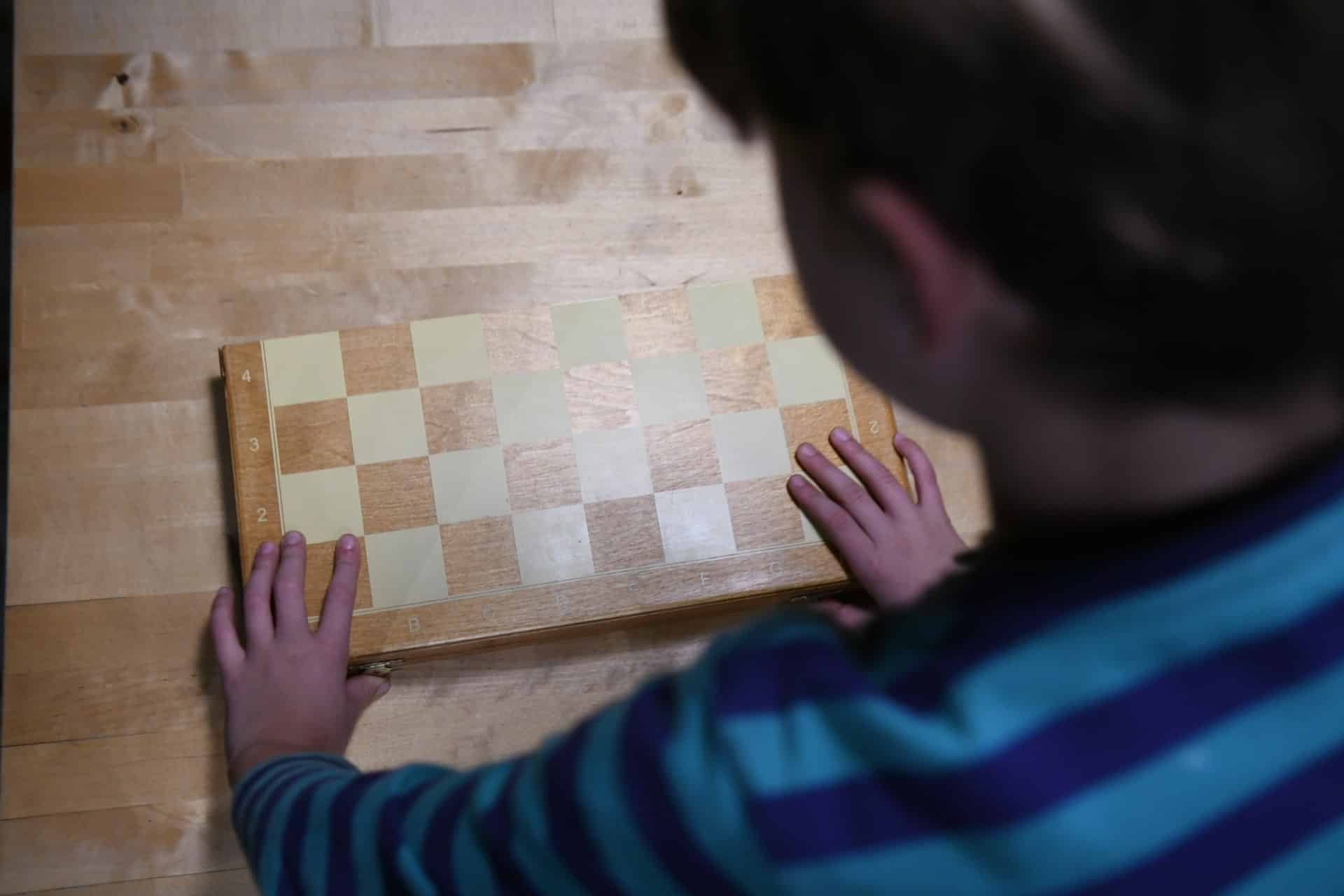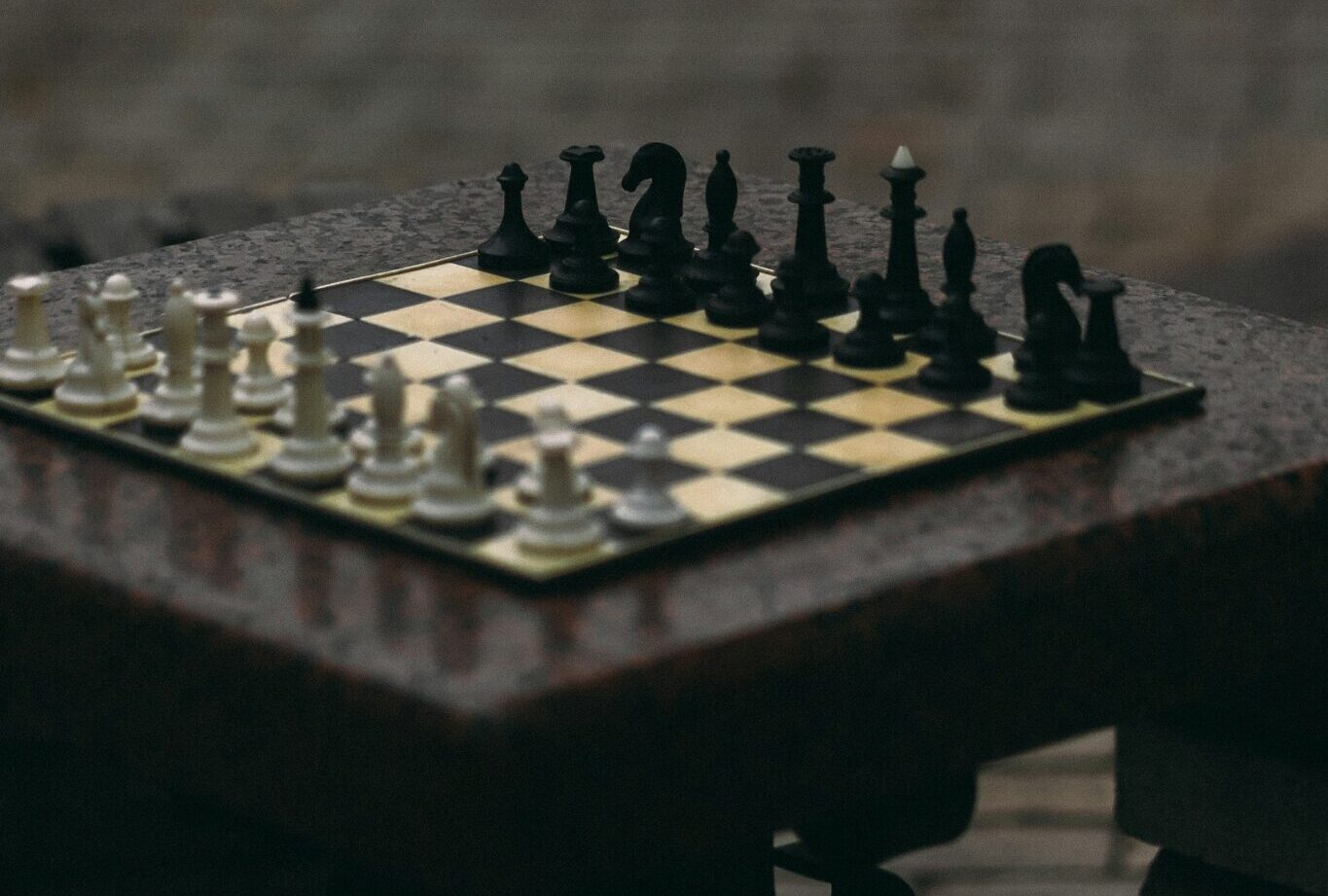Table of Contents
The tactic in chess
The starting chess player learns chess in basic concepts. We must know the board, the light, and dark squares. Our focus shifts to the warriors of the chessboard. The tactic in chess is very important.
We learn how the Bishop moves this “diagonal” route, the Rook straight up and down, the Queen like a Rook and a Bishop, the Knights these cool though potentially awkward “L-shapes”, etc. What many beginners struggle with is “strategy”… how to formulate a plan and win the game.
For players rated above 1200 ELO, strategy correlates to positional chess. Speaking to the beginning players just starting out, this “planning and strategizing” is what the cool kids call “the tactic in chess“.
Introduction to the tactic in chess
What is the tactic in chess? According to Wikipedia, a tactic refers to a sequence of moves that limits the opponent's options and may result in tangible gain. The tangible gains are primarily to checkmate, and gain of material.
Remember that pieces are counted for point value (Queen 9, Rook 5, Bishop/Knight 3, Pawn 1). For example, winning a Queen for a Knight is a highly profitable trade. Keep this in mind when we show you tactics.
Tactics are generally listed within the following categories below, though there are others in addition to this not commonly used:
- Checkmate
- Fork
- Pin
- Skewer
- Discovery
- Deflection
There are many more tactical motifs, though our focus today will be on those six. We will analyze each tactic thoroughly and find out how we can apply them in real chess games.
Checkmate
Yes. The most fundamental, though crucial one of all: Checkmate. Remember that checkmate is when the enemy King is attacked, and he has no possible way to evade the attack. The checkmating side wins the game.
The Rooks above do a great job occupying every possible escape square of the King.
As we know, checkmate can come in so many other ways.
The Queen protected by the Bishop delivers a nice checkmate. Of course, there are more advanced examples.
A more advanced example with more pieces on the board, though Black is in checkmate. The Queen and Rook do a good job joining forces to finish the King off. There are obviously many more checkmate examples, though, for the article, we should move on to other forcing tactics.
The Tactic In Chess – Fork
A fork, also known as a “double attack” occurs when a piece attacks two opposing pieces at one time, and the opposition has no defense against both. Knight forks are very common in chess games.
The Knight on e5 attacks both the Queen and the King simultaneously. If the Knight were attacking only one piece or the other, the attacked piece could easily move away. Although, both strong pieces are under fire. One must step away, and the other must go. Although, other pieces besides the Knight can fork.
White's Rook on e7 in the position above attacks both the Black King and the loose Knight on c7. Let's look at one more practical example:
Black plays Qf5(!) in the position above. What is the double attack? Black is threating A) to take the Knight for free on e5, and B) to play Qxf2, with an eventual checkmate on the White King.
The Tactic In Chess – Pin
A pin in chess is when a piece cannot (or should not) move fearing the loss of a more valuable piece behind it.
There are two types of pins: Absolute pins, and relative pins. An absolute pin is when the piece absolutely cannot move because moving him would put the King in check, which is illegal! A relative pin is when the piece can legally move, though he probably does not want to for fear of losing a piece of value. Here are some examples of both types of pins:
The Knight on c6 cannot move because the Bishop would capture the King.
The Knight on f6 CAN legally move, though that would be foolish, as the Black Queen would say “farewell”.
How can we use a pin to our advantage? The best way to do so is to attack the pinned piece. When you attack a pinned piece, you are asking a piece that would normally not be able to move out of your attack… they will either not move and get taken, or move and the piece behind it will go. Here is an example:
Just like in our first pin diagram, Black's Knight is pinned to the King. However, moving our pawn to d5 attacks that Knight, though there is nothing Black can do about the attack! White will net material. Black's toast.
The Tactic In Chess – Skewer
What is a skewer? A skewer is the same thing as a pin, but instead, the attacked piece must move, and it will drop a less-valuable piece behind it. Let's see a couple of examples:
This is as good of an example as it gets. Black is doomed because the King is in check and forced to move. However, the White Queen will swoop down and take the Black Queen. Here's one more practical example of a skewer that could happen in a real chess game:
White plays Rxg7 in the diagram above. Note the g3-Rook is not defended, so when the King moves, White will claim the Rook and material advantage.
More Tactics – Discovery and Deflection
We will close our lecture on chess tactics with two motifs, not quite as common as the checkmate, fork, pin, and skewer, though they definitely can come up during your chess games.
A Discovery or a Discovered Attack is when one piece innocently moves, though paves way for an attack that would otherwise not be possible without that piece moving. Here is an example:
The position below seems like a regular equal Rook endgame. However, White moves Ke6!, which unleashes the Rook to check the Black King. Black's Rook on f7 is also being attacked, so Black drops the Rook and the game.
A deflection is when by the means of a check, or other forcing move, you force one piece away from defending another piece or important square, so you can take the newly undefended piece.
Black wins material immediately with Qxe4. The Queen is untouchable, as Qxe4 runs into Rd1 with an eventual back rank checkmate. White's Queen has been deflected from the defense of the crucial back rank.
The improvement of results – Be able to calculate all the combinations
The positional game can lead to excellent results. It can be used to put the adversary under a great amount of pressure, reduce his game, and put him against the wall.
However, to win the match it is probable that on many occasions you will need a tactic strike that will turn the positional advantage into a palpable advantage. The name given to a series of tactical movements that may imply a sacrifice is a combination.
For example, if you have a passed pawn, there can be a tactical combination that will lead to a promotion. On the other hand, if the King’s safety is dubious, a checkmate combination can be done. Tactical capacity and the ability to detect this type of combinations help transform positional advantages more tangible gains.
Tactic awareness for the implementation of position
Positional players must be conscious of the tactical resources hidden in their positions. Even if the combinations don’t occur, it’s very important to have tactical awareness when positional plans are trying to be made. Positional plans can have tactical surprises.
There are some positional players that really know how to put their opponent under a lot of pressure in their presence. If they also have a conscience tactic they become more flexible and more efficient players.
This way they will avoid falling into traps or simple tactical resources from their rival and materialize a positional advantage more quickly. They will also be more straightforward and won’t offer the adversary a chance to counterattack.
It’s not enough to judge the positions based on how well they appear or superficial judgment. The tactic can compensate for the material or strategic disadvantage that may have been made in previous movements.
An entertainment plan based on tactic helps progressive players a lot
A chess player needs to practice tactic as soon as possible because it’s the most basic element in chess, from combinations of 1 or 2 movements to more complex ones.
In snooker, the analogy would also be being able to take the balls to the pockets. The capacity of being more advanced snooker must be learned after this.
The reason for this is that without the first one, you would never win and the learning of the second one wouldn’t really exist.
The most abstract elements of chess should be given to the amateur player after he familiarizes with all the basic tactical set.
Winning matches thanks to tactic is a good base for greater sophistication in terms of positional game development. It also allows you to play better than the rival and accumulate small advantages.
Obtaining good results is always a great incentive to know more about chess.
Practice Tactics!
You have learned the main tactical patterns that can be seen during your chess games. Apply your knowledge to practice! Especially for players under 1400 ELO, tactics decide over 95% of chess games.
If you practice tactics more than your opponent, you have the superior odds to win the game. There are many online resources to practice, for example, Chess.com's puzzles trainer, Lichess tactics, Chesstempo, etc. Most of these sites are free. Take advantage of them, and go win some chess games!






